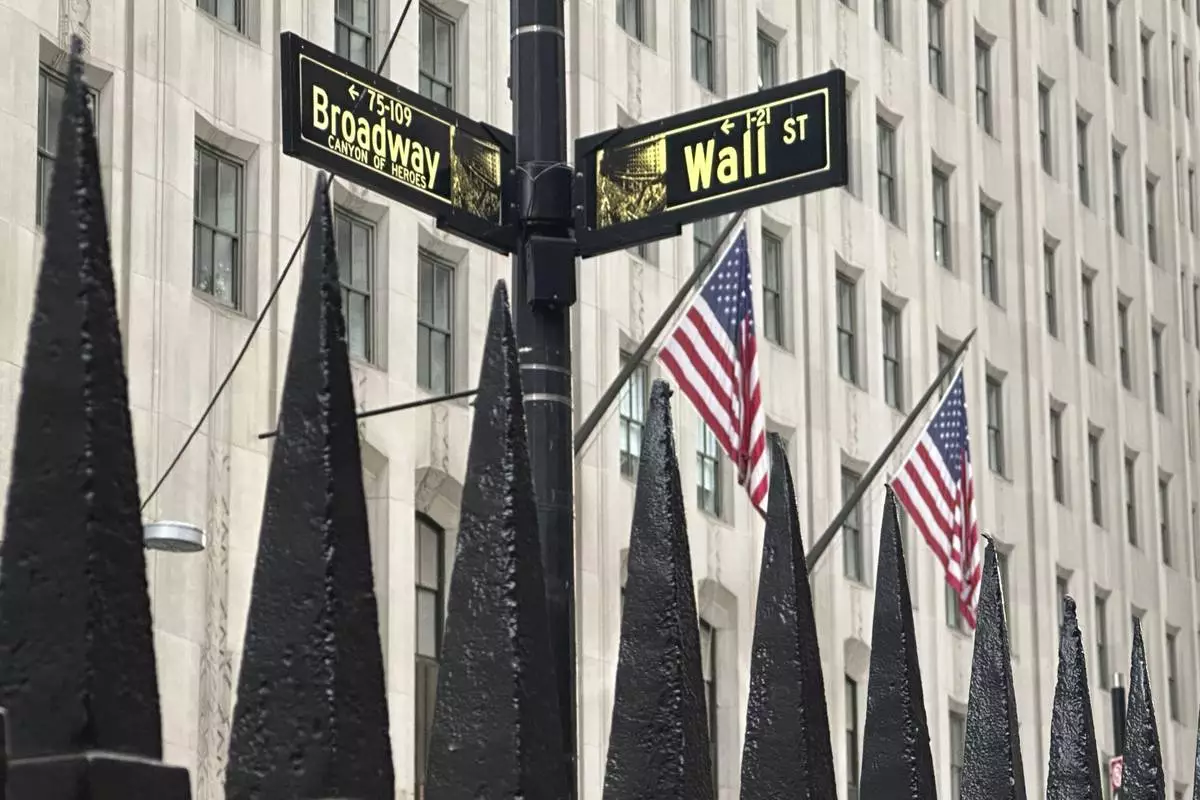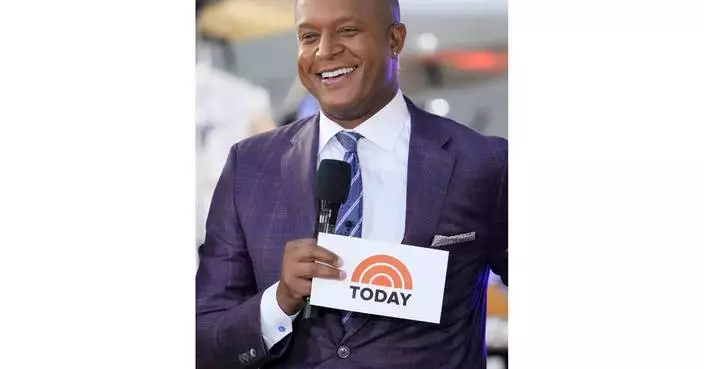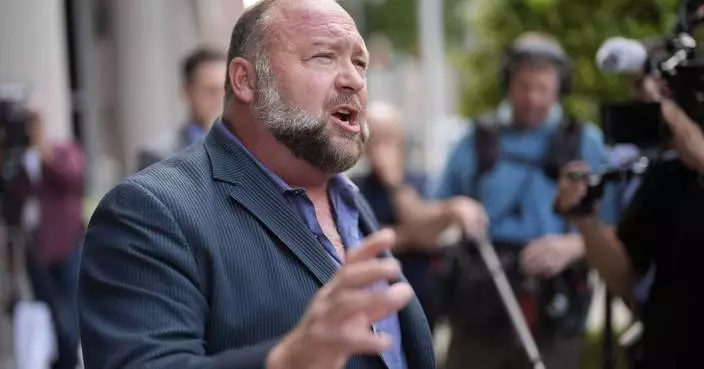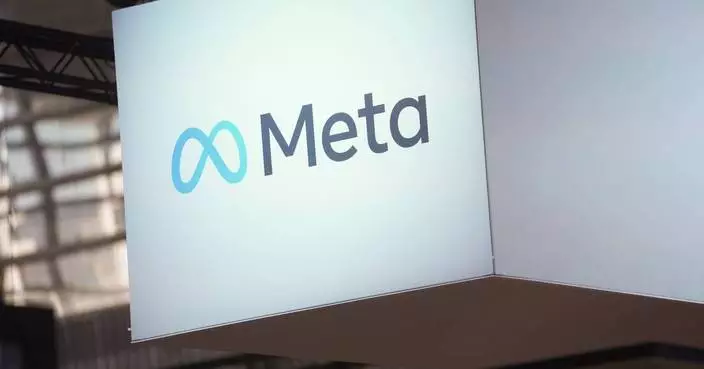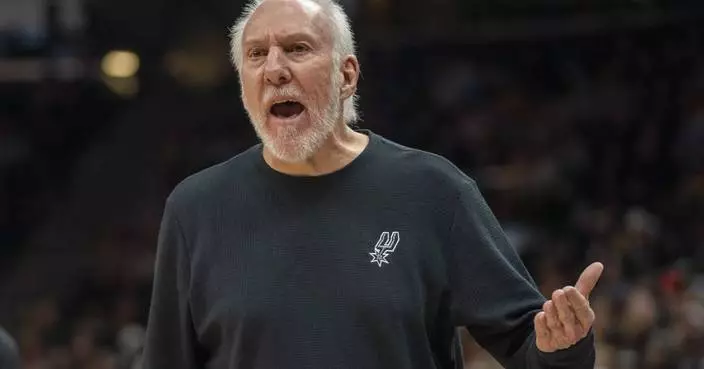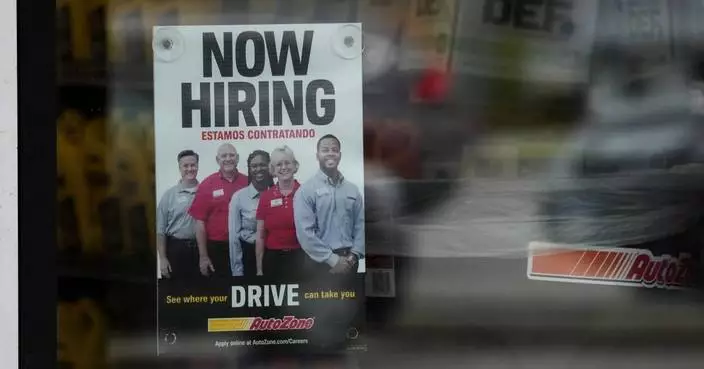NEW DELHI (AP) — Donald Trump’s return to the White House has made many countries anxious and recalculating where they stand with the U.S., but India appears to be welcoming the change that may embolden nationalist leaders like Prime Minister Narendra Modi.
“I know today a lot of countries are nervous about the U.S., let’s be honest about that,” India’s External Affairs Minister Subrahmanyam Jaishankar said over the weekend. India was “not one of them.” A call from Modi “was among the first three calls, I think, that President (elect) Trump took," he added.
A second Trump presidency is likely to play out in New Delhi’s favor, experts say, especially as Modi seeks to reset India’s relationship with the West after recent frictions over his refusal to join sanctions against Russia or condemn its 2022 full-scale invasion of Ukraine. Modi has also been criticized over India's democratic backsliding.
“Trump’s victory means that the Indian policies that have put New Delhi at odds with the West … will no longer be a cause of concern for Washington,” said Michael Kugelman, South Asia director at the Wilson Center.
There could be ruptures on trade, immigration and climate change goals — but on balance, “the return of Trump means that India’s relations with the West – and specifically its most powerful country — will get a boost,” he added.
Modi has sought to cast India as a rising global player with a fast-growing economy that can counter China. But critics say his authoritarian politics and right-wing Bharatiya Janata Party have deeply polarized the country with minorities increasingly marginalized and the right to free speech and press under attack.
When President Joe Biden honored Modi with a state visit last year, he walked a tightrope as activists and groups pressured him to confront Modi over his human rights record. Still, the two leaders rolled out new business deals on defense and technology.
Such concerns won't be an issue with Trump, said Uday Chandra, assistant professor of government at Georgetown University in Qatar. “He is a refreshing reset from the Indian perspective … he is much more transactional.”
Trump, long an open admirer of Russian President Vladimir Putin, is also likely to be more understanding of India’s strategic partnership with Moscow, which dates back to the Cold War, its record purchases of Russian crude, and its refusal to pick a side in the war in Ukraine. “This was the real sort of thorn in India-U.S. relations over the past two years … but with Trump, I don’t see this being an issue,” Chandra said.
One hot-button issue is trade. In his first term, trade differences between the two countries came to the fore with Trump calling India the “tariff king” over disagreements on farm goods, Harley Davidson motorcycles and medical devices. In 2019, he canceled the country's special trade privileges and India responded by slapping tariffs on more than two dozen U.S. goods.
This time, Trump wants to impose a “universal” tax of 10% or 20% on all imports and raise tariffs on Chinese goods to 60%. India, which counts the U.S. as its second-largest trading partner, won't be an exception.
“New Delhi will have to do more than just tinkering with its policies to deal with Trump’s emphasis on fair trade,” said C Rajamohan, a professor at the Institute of South Asian Studies in Singapore.
Immigration could turn into a sore point if Trump attempts to also curb skilled migration. Indians have often been the largest group applying for the H1-B work visa but Trump had called the visa program “very bad” and “unfair” for U.S. workers.
Progress on climate change and clean energy could also be hit.
“India and the U.S. have done quite a lot on this front over the past four years — but this is something that could unravel because a Trump administration is more aligned with the fossil fuel industry than with green technology,” said Milan Vaishnav, South Asia Program director at the Carnegie Endowment for International Peace.
Both Trump and Modi embody strongmen tactics, count on an impassioned support base and have ramped up polarization to consolidate votes. And unlike liberal leaders in the West, Trump doesn’t view Modi’s policies at home problematic – or even relevant, said Kugelman.
“They’re both ardent nationalists committed to making their nations stronger at home and abroad,” he added.
Analysts also point to the personal bond between the two. When Trump visited India in 2020, Modi threw him an event in the world's largest cricket stadium.
The year before that, Trump likened Modi to Elvis Presley for his crowd-pulling power at a joint rally in Texas. In his congratulatory post to Trump on X last week, Modi shared photos of the two leaders hugging, smiling and holding hands.
“There’s a bromance between the two,” said Chandra. "But they're also united by a shared worldview — that we are in a post- liberal world and that liberalism as an ideology for conducting global politics is no longer viable. That’s as true in India as it is in America.”
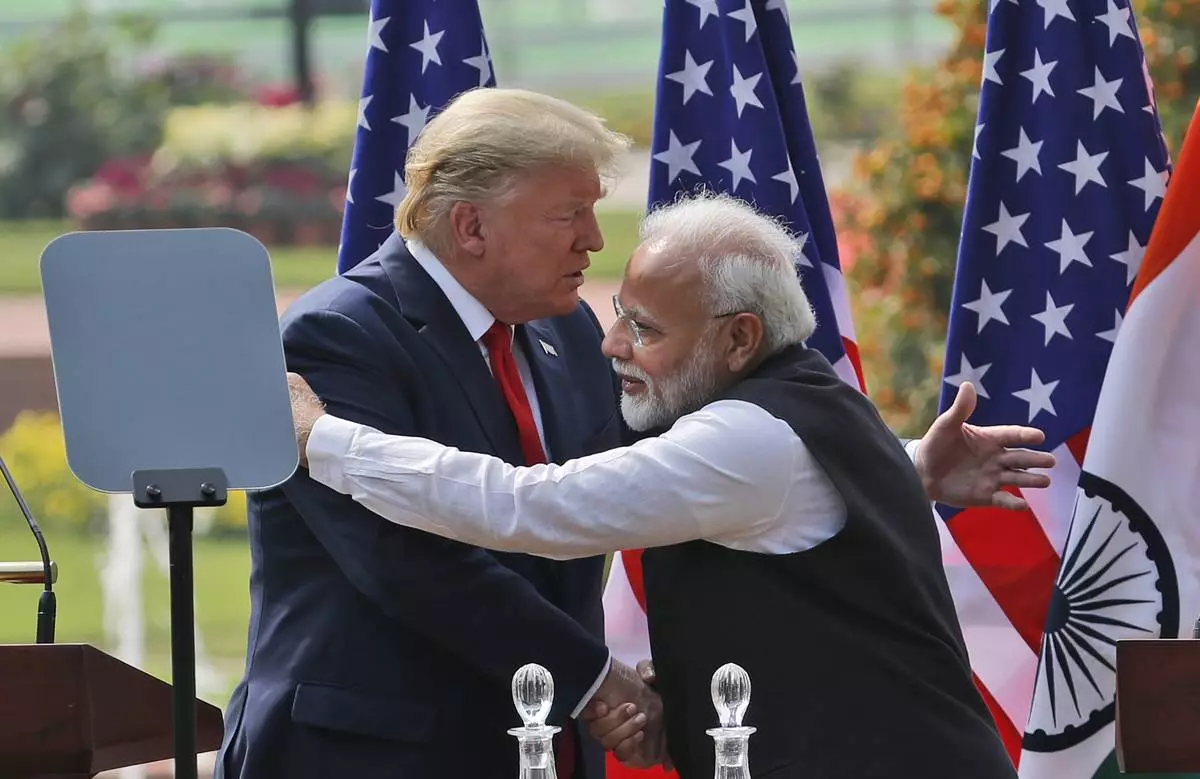
FILE - U.S. President Donald Trump, left and Indian Prime Minister Narendra Modi embrace after giving a joint statement in New Delhi, India, Feb. 25, 2020. (AP Photo/Manish Swarup, File)
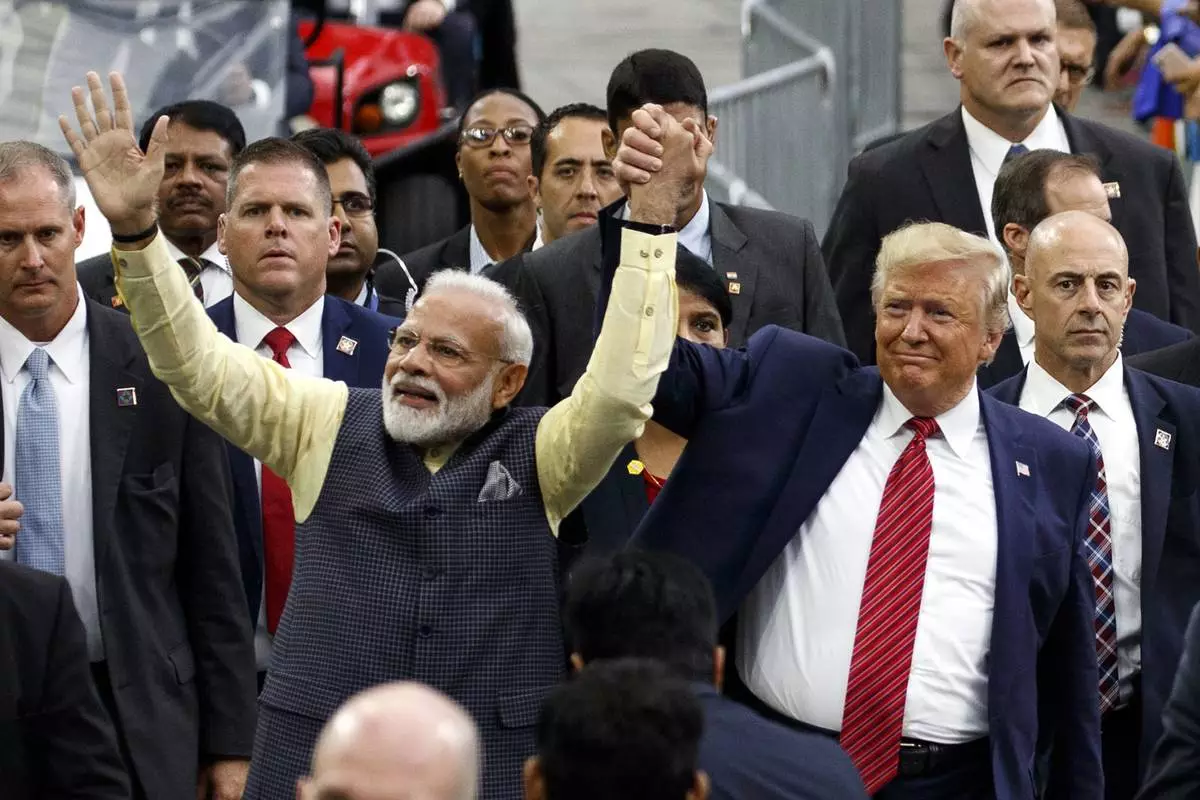
FILE - President Donald Trump and Indian Prime Minister Narendra Modi walk around NRG Stadium waving to the crowd during the "Howdy Modi: Shared Dreams, Bright Futures" event, Sept. 22, 2019, in Houston. (AP Photo/Evan Vucci, File)

FILE - Prime Minister Narendra Modi and President Donald Trump, right, shake hands after introductions during the "Howdi Modi" event, Sept. 22, 2019, at NRG Stadium in Houston. (AP Photo/Michael Wyke, File)

FILE- President Donald Trump and Indian Prime Minister Narendra Modi, left, share a laugh together during a bilateral meeting at the G-7 summit in Biarritz, France, Aug. 26, 2019. (AP Photo/Andrew Harnik, File)



